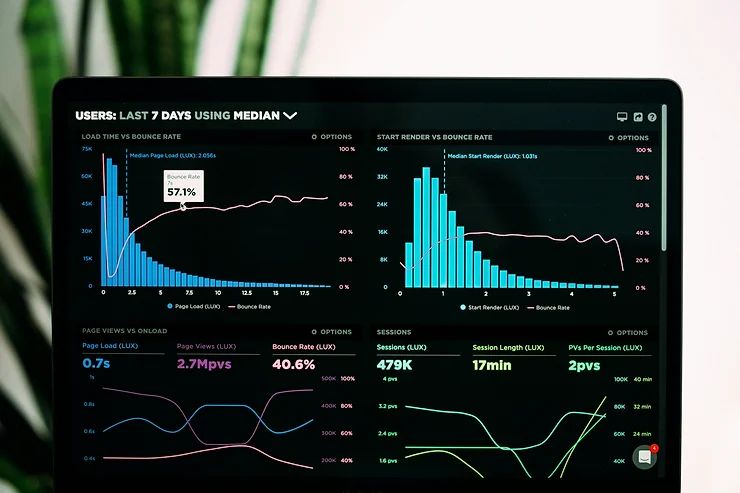
- October 15, 2024
Applications of Data Science in Finance
Finance is the driving force behind most organizations since it determines everything from the start-up of a company to its expansion. As a result, financial management is a vital job in every industry, particularly in finance and banking.
Data is inseparably linked to financial management. Several financial processes may be impossible to carry out without data. Because finance and data are so closely linked, data science applications in finance are critical. Let’s get a better understanding of data science in finance.
Data science in finance
In the process of employing statistical and scientific approaches on data to gain insights, data science includes multiple disciplines. This data is useful for making strategic decisions in a business. This is an iterative process that often includes the following steps: defining the problem, organizing the process, collecting data, processing raw data to prepare it for analysis, doing the analyses, and communicating the findings to stakeholders.
Data science in finance has been successfully adopted to open more doors to data-driven decision making, thanks to the abundance of data available today and simple access to efficient processing capacity.
Delivering customized services
A successful customer acquisition and retention strategy is to provide tailored services while keeping the customer’s demands in mind. Companies differ from their competitors in terms of customer satisfaction and loyalty. Although personalized services are not new, their execution has been evolving over time.
To analyses historical data and generate a 360-degree image of a customer, data science tools are used. All personalization services rely on detailed data and the insights gained from it. In the banking and financial services industry, there has been a progressive transformation in the client journey. With fewer face-to-face encounters, multi-touch attribution models fill the void and aid in a better understanding of customers.
Risk assessment and management
Every organization has a risk component that must be assessed so that it may be controlled in a timely manner. The risk assessment and management process in the financial sector includes procedures ranging from risk identification to risk mitigation. Financial crises, payment defaulters, or any other operation in the ecosystem could all pose risks. To save money, preserve their brand, or limit their legal exposure, businesses must identify and manage risks.
Data science in finance assists risk managers in a variety of areas, such as counterparty credit risk and anti-money laundering (AML). Transactional defaults are not rare. A transaction’s counterparties may default before the ultimate settlement. Counterparty credit risk is what it’s called, and data science is employed to assess it before a transaction is made. In the same way, data science has found applications in AML. Money laundering is frequently linked to illicit activity and is a source of social issues. Apart from moral responsibility to society, AML is applied to comply with regulatory agencies and defend brand image.
Fraud detection and prevention
Tax avoidance, insurance claims, and identity theft are all examples of financial fraud. For organizations, tracking fraud possibilities and taking precautions to prevent loss is a top issue. The application of data science in finance has improved throughout time, resulting in more efficient systems that can detect the likelihood of fraud much earlier.
When big data is analyzed using data science, fraud detection becomes considerably more accurate, allowing businesses to intervene in real time. Unusual variations in credit card usage or banking transactions, for example, maybe flagged so that necessary action can be taken. This aids the organization in safeguarding a customer as well as its reputation and operations.
Real-time analytics
Time is of the essence in the financial industry, especially. As a result, real-time analytics is as critical, if not more significant than, historical data analytics. Organizations can benefit from data science technologies. This aids businesses in better understanding their existing clients and improving their brand experience and connection with brand properties. They receive the possibility to improve customer interactions and raise the likelihood of consumer loyalty.
Predictive consumer analytics
The requirement to respond to changing consumer behavior is at the heart of the demand for predictive consumer analysis. Consumers today are more informed and empowered, with higher expectations. An organization must have knowledge of these clients’ tastes and lifestyles in order to respond positively to them. An organization’s ability to forecast future behavior and provide appropriate offers for customers is aided by a greater understanding of the customers.
Predictive consumer analytics is enabled by data science tools, which aid in raising response rates, repeat consumers, and profitability. These assessments also aid in improving the performance of their promotion initiatives. Consumers who are most likely to respond positively to offers receive campaigns customized with such insights. With fewer and more targeted recipients, campaign expenditures are also lowered.
Customer data management
Customer data management is crucial for a company’s profitability in today’s competitive business environment. With big data analysis and data science, businesses may learn nearly anything about a customer that is relevant to their business.
Consumer purchase behavior and demographics are increasingly available to businesses. This information can be used to deduce market trends and predict customer behavior. Customer data management provides a comprehensive view of consumer behavior and aids in data-driven decision-making.
Conclusion
Data science is used by finance professionals in many more ways than those described above. Data science and machine learning have been evolving in recent years, assisting businesses in automating their operational operations and improving the value proposition they can provide to their consumers while also improving their bottom line.










